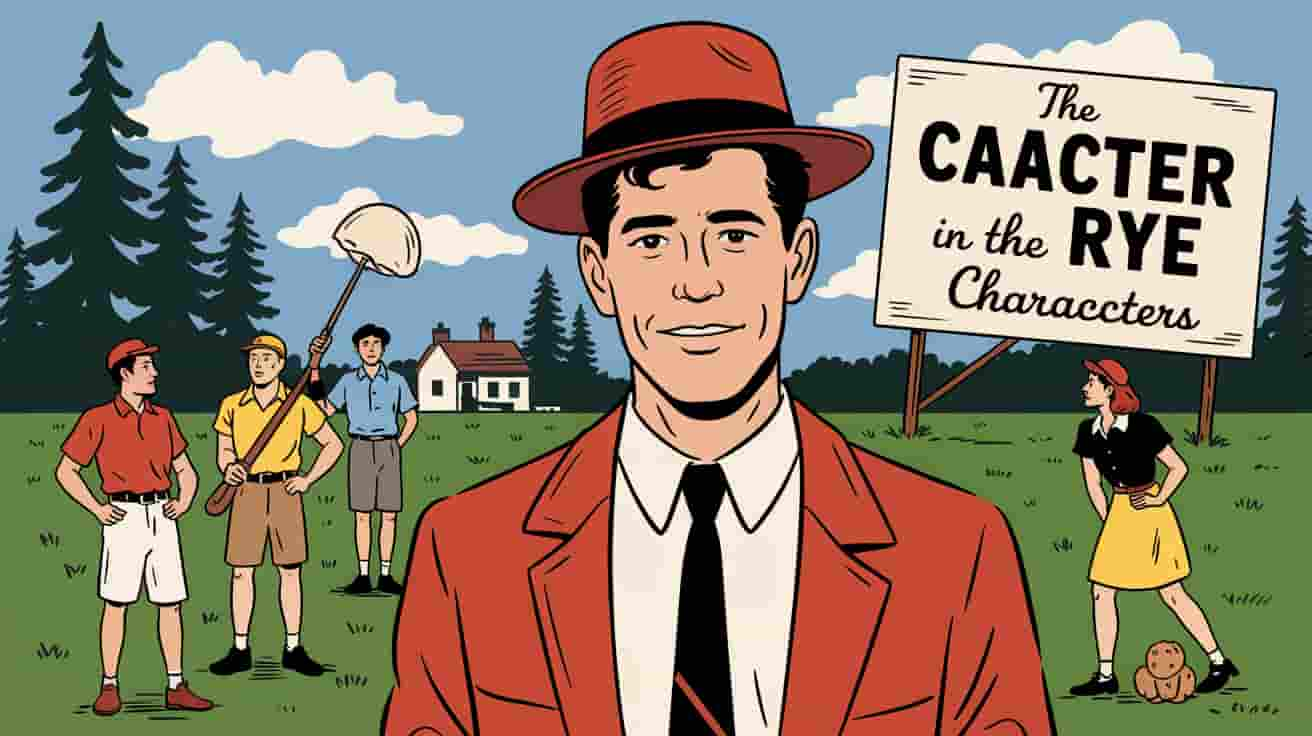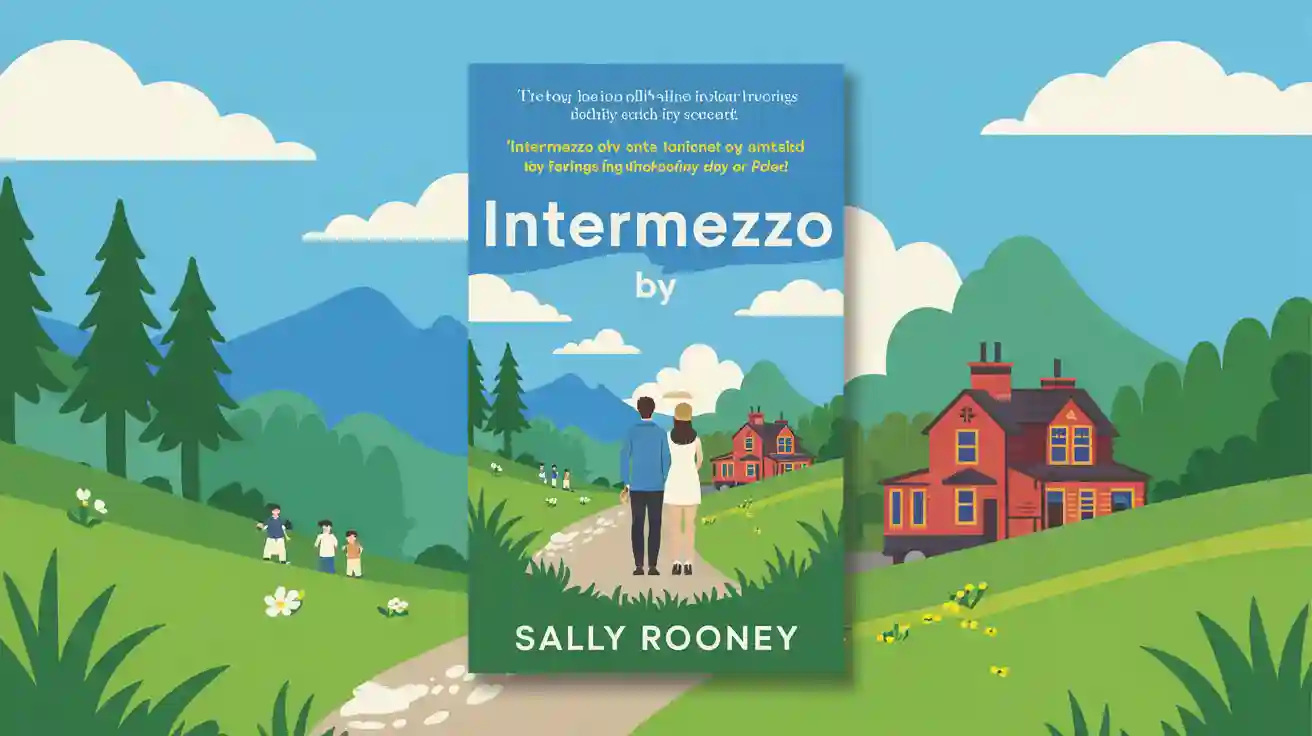J.D. Salinger’s The Catcher in the Rye remains a literary cornerstone, not just for its compelling themes of alienation, innocence, and identity, but also because of its unforgettable characters. At the heart of the novel is Holden Caulfield, the cynical yet sensitive teenager whose voice resonates across generations. Surrounding Holden is a cast of characters—some minor, some major—that help shape the narrative and highlight the emotional turmoil of adolescence. This blog post provides a comprehensive look at the key characters in The Catcher in the Rye, dissecting their roles, personalities, symbolism, and how they contribute to the novel’s lasting legacy.
1. Holden Caulfield: The Unreliable Narrator and Symbol of Teenage Angst
Word Count: ~1,200
Holden Caulfield is one of the most iconic characters in American literature. A sixteen-year-old who has been expelled from multiple prep schools, Holden narrates the entire story through a stream-of-consciousness style that captures the confusion, pain, and rebellion of adolescence.
Personality and Traits
- Cynical and Judgmental: Holden constantly criticizes the “phoniness” he sees in the adult world.
- Sensitive and Caring: Beneath his hardened exterior, Holden shows deep care for children, especially his younger sister, Phoebe.
- Lonely and Depressed: Holden battles inner demons, including grief over his brother Allie’s death and a fear of growing up.
Holden as a Symbol
Holden represents the struggle between childhood and adulthood, innocence and corruption. His desire to be “the catcher in the rye”—a guardian who saves children from falling into adulthood—underscores his resistance to growing up.
Psychological Complexity
- Grief and Trauma: Holden’s psychological state is heavily influenced by Allie’s death.
- Fear of Change: He is terrified of the complexities of adult life, preferring the simplicity and purity of childhood.
- Mental Health Struggles: His behavior throughout the novel points toward depression, anxiety, and possible PTSD.
2. Phoebe Caulfield: The Voice of Innocence and Wisdom
Word Count: ~700
Phoebe Caulfield, Holden’s ten-year-old sister, plays a small but vital role in the novel. Intelligent, perceptive, and honest, Phoebe represents the innocence Holden longs to protect.
Traits and Personality
- Wise Beyond Her Years: Phoebe often challenges Holden’s flawed logic.
- Loving and Supportive: Despite her youth, she offers the emotional grounding Holden desperately needs.
- Playful and Imaginative: She enjoys writing and is full of youthful energy.
Symbolism
Phoebe embodies childhood innocence, but also serves as a mirror that forces Holden to confront his own contradictions. When she insists on running away with him, it jolts Holden back to reality and spurs his emotional breakthrough.
Role in the Story
Her presence catalyzes the novel’s climax. When Holden sees her riding the carousel at the end, it’s a symbolic moment of acceptance: he cannot—and should not—prevent children from growing up.
3. Allie Caulfield: The Eternal Ideal
Word Count: ~500
Though deceased before the story begins, Allie Caulfield—Holden’s younger brother—casts a long shadow over the novel.
Holden’s Idolization
Holden idolizes Allie, often describing him as brilliant, kind, and pure. Allie’s red hair and poetic nature contribute to this idealized image.
Symbol of Innocence and Loss
Allie is not just a character; he’s a symbol of untainted childhood and the pain of loss. Holden’s inability to let go of Allie underscores his obsession with innocence and his emotional paralysis.
The Baseball Glove
Allie’s glove, covered in poems written in green ink, is a cherished keepsake for Holden. It symbolizes both Allie’s uniqueness and Holden’s inability to move on.
4. Mr. Antolini: The Conflicted Mentor
Word Count: ~500
Mr. Antolini, Holden’s former English teacher, is one of the few adults Holden respects—at least initially.
Traits and Role
- Intelligent and Caring: He offers Holden a place to stay and tries to advise him.
- Philosophical: He delivers one of the novel’s key messages: “The mark of the immature man is that he wants to die nobly for a cause…”
The Controversial Incident
Holden wakes up to find Mr. Antolini stroking his head, which unsettles him. This moment is ambiguous—some see it as an act of genuine concern, others as inappropriate behavior. Regardless, it breaks Holden’s trust.
Symbolism
Mr. Antolini represents the complexity of adulthood. He is not wholly phony or pure, but human, flawed, and nuanced—something Holden struggles to accept.
5. Sally Hayes: The Allure and Frustration of Superficiality
Word Count: ~400
Sally is a socialite and a former flame of Holden’s, embodying everything he finds frustrating about adult society.
Traits
- Charming but Shallow: Sally enjoys social status and traditional life paths.
- Emotionally Detached: She doesn’t understand Holden’s deep inner turmoil, which leads to a failed date and argument.
Symbolism
Sally symbolizes the phoniness and materialism Holden claims to detest, yet he is still drawn to her—showing his internal conflict and hypocrisy.
6. Jane Gallagher: The Ghost of Love and Longing
Word Count: ~400
Jane never appears directly in the novel, but she is one of the most significant off-page characters.
Importance to Holden
Holden has deep affection for Jane, with whom he shared a meaningful summer friendship. She’s associated with genuine emotional connection and trust.
Symbolism
Jane symbolizes authentic intimacy and lost innocence. Holden’s reluctance to reach out to her may indicate his fear of rejection or of facing the changes time may have brought.
7. Stradlater and Ackley: Mirrors of Holden’s Internal Conflict
Word Count: ~600
Ward Stradlater
Holden’s roommate at Pencey Prep, Stradlater is handsome, athletic, and socially adept. He represents conventional success and masculinity, but also phoniness and arrogance.
- Tension with Holden: Their conflict over Stradlater’s date with Jane reveals Holden’s possessiveness and insecurity.
- Symbol of Superficiality: Stradlater cares about appearances, but lacks emotional depth.
Robert Ackley
Ackley is awkward, unattractive, and annoying, often invading Holden’s personal space.
- Contrast to Stradlater: Where Stradlater is admired, Ackley is ridiculed.
- Holden’s Projection: Holden feels a mix of irritation and pity for Ackley, perhaps projecting his own feelings of isolation.
Together, Stradlater and Ackley serve as foils—they reflect the opposing aspects of Holden’s personality and his struggle with identity.
8. D.B. Caulfield: The Compromised Artist
Word Count: ~300
Holden’s older brother D.B. lives in Hollywood and works as a screenwriter—a choice Holden views as a sellout.
Traits and Role
- Talented but Compromised: Holden admires D.B.’s writing but criticizes him for “prostituting” his talent.
- Symbol of Disillusionment: D.B. reflects Holden’s fear that adulthood requires betraying one’s ideals.
D.B.’s presence frames the novel—he is mentioned in the beginning and end—highlighting Holden’s journey toward understanding and forgiveness.
9. Minor Characters: Windows into Society
Word Count: ~600
Maurice and Sunny
Maurice, the pimp, and Sunny, the young prostitute, represent the ugliness and exploitation of the adult world. Holden’s failed interaction with Sunny emphasizes his discomfort with sex and intimacy.
The Nuns
Holden’s encounter with two nuns shows his capacity for kindness and respect. Their simple lives and genuine conversation contrast with the phoniness he typically sees in adults.
Mr. Spencer
Holden’s history teacher at Pencey tries to give him a life lesson before he leaves school. Though well-meaning, Mr. Spencer symbolizes the detachment of the adult world from Holden’s inner life.
Carl Luce
An older student at Columbia, Carl is emotionally distant and intellectually superior. Their awkward conversation in a bar showcases Holden’s desire for connection and fear of vulnerability.
10. Final Thoughts: What These Characters Teach Us
Word Count: ~500
Each character in The Catcher in the Rye plays a distinct role in illuminating Holden’s psychological landscape and Salinger’s larger themes. Through Holden’s interactions with them, we explore timeless questions:
- What does it mean to grow up?
- Can innocence be preserved?
- Is adulthood inherently corrupt?
Holden’s journey is not linear or neatly resolved, and neither are the characters he encounters. They are flawed, complex, and often contradictory—just like real people.
Conclusion
The Catcher in the Rye is a masterclass in character development. From Holden’s tortured mind to Phoebe’s gentle wisdom, each character is carefully crafted to deepen our understanding of adolescence, loss, and the quest for authenticity. By examining these characters closely, we don’t just learn about Holden—we learn about ourselves, our fears, and our longing for connection in an often confusing world.









